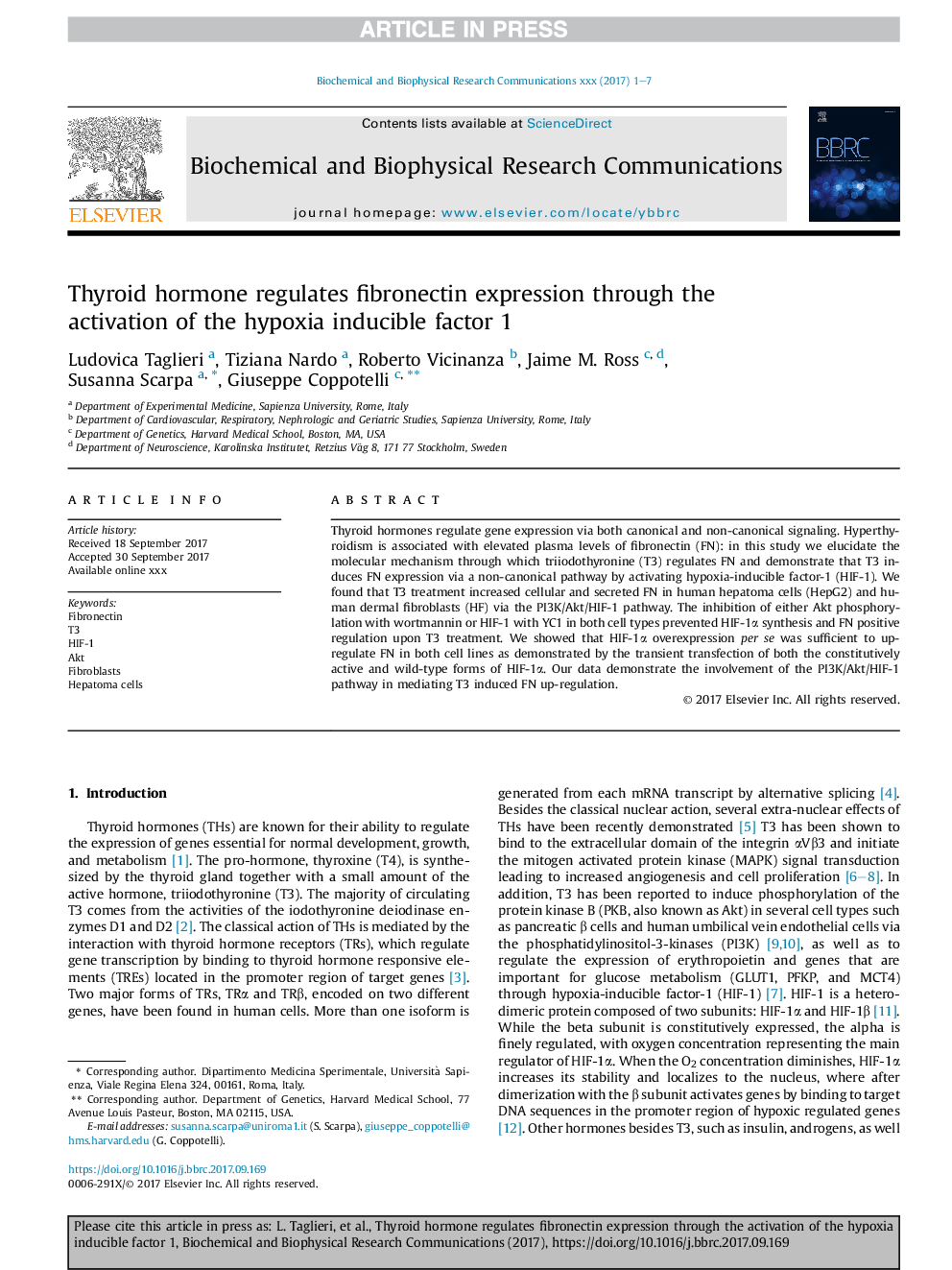| Article ID | Journal | Published Year | Pages | File Type |
|---|---|---|---|---|
| 8296199 | Biochemical and Biophysical Research Communications | 2017 | 7 Pages |
Abstract
Thyroid hormones regulate gene expression via both canonical and non-canonical signaling. Hyperthyroidism is associated with elevated plasma levels of fibronectin (FN): in this study we elucidate the molecular mechanism through which triiodothyronine (T3) regulates FN and demonstrate that T3 induces FN expression via a non-canonical pathway by activating hypoxia-inducible factor-1 (HIF-1). We found that T3 treatment increased cellular and secreted FN in human hepatoma cells (HepG2) and human dermal fibroblasts (HF) via the PI3K/Akt/HIF-1 pathway. The inhibition of either Akt phosphorylation with wortmannin or HIF-1 with YC1 in both cell types prevented HIF-1α synthesis and FN positive regulation upon T3 treatment. We showed that HIF-1α overexpression per se was sufficient to up-regulate FN in both cell lines as demonstrated by the transient transfection of both the constitutively active and wild-type forms of HIF-1α. Our data demonstrate the involvement of the PI3K/Akt/HIF-1 pathway in mediating T3 induced FN up-regulation.
Related Topics
Life Sciences
Biochemistry, Genetics and Molecular Biology
Biochemistry
Authors
Ludovica Taglieri, Tiziana Nardo, Roberto Vicinanza, Jaime M. Ross, Susanna Scarpa, Giuseppe Coppotelli,
